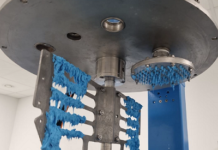Interpreting TCR, Chord Slopes and Change Rate Analysis Specifications
Despite differences in designs and associated manufacturing processes, TCR remains one of the most commonly accepted resistor performance stability indicators. TCR is imperative for predicting resistor sensitivity to ambient temperature variations, as well as anticipated component behavior at both low- and high-operating temperatures. As a result, the TCR of Bulk Metal Foil resistors takes into consideration extreme theoretical conditions within individual specification limits. In contrast, with other technologies such as thin film, manufacturers typically choose to present TCR in a relatively narrow temperature range, with less emphasis or consideration on extreme temperature effects.
In addition to its previously noted definition, TCR may be further defined as a resistance change between two temperatures, divided by the temperature difference (chord slope), or TCR = (ΔR/R)/ΔT. It is common practice to define cold chord slope from –55°C to +25°C, and hot chord slope from +25°C to +125°C (in this case ΔThot = 125 – 25 = +100°C). However, any other temperature interval (ΔT) may be defined as well. To define the rate of change in resistance at any temperature on that curve, TCR is calculated mathematically when ΔT becomes infinitely small (ΔT→0):
TCR(ΔT→0) = (dR/R)/ dT
It is well-known that the change in resistance vs. temperature in NiCr resistors is not linear, and instead normally follows a parabolic pattern. Mathematically, this function can be described by:
Y = aX2 + bX + c where: Y = ΔR/R (normally expressed in ppm)
X = T (Temperature in °C).
In this case, for any temperature T, Y will express the value of the change in resistance ΔR/R from the nominal value (at +25°C) in ppm. In other words, for the function Y, this will be expressed by the derivative function Y′. This function defines the slope (TCR) of a line tangent to the parabola and indicates how TCR is changing. For the above parabola function:
Y′= 2aX + b (Y′ is expressed in ppm/°C)
For simplicity, one can also use the fact that a chord slope equals the tangent midpoint value of the relevant temperature range. For example, the value of the hot slope (+25°C to +125°C) equals the tangent value (Y′) at the midpoint, T = +75°C.
It is a common practice for thin-film resistor manufacturers to target best hot slope, while keeping cold slope within the specified limit. A study conducted to compare and analyze Bulk Metal Foil and thin-film precision resistor TCR, using the change rate calculation method, has shown that the change in resistance due to temperature can be significantly larger than specified TCR limits. This comparison is based on the testing of two groups of different precision thin-film NiCr resistors, each from different manufacturers, each specifying a TCR of 5 ppm/°C. Results of this study demonstrated that the maximum change in resistance (TCR) due to temperature changes across the temperature axis from -55°C to +125°C will vary in Bulk Metal Foil resistors from -2.17 ppm/°C to +2.2 ppm/°C, for a total of less than 4.37 ppm/°C. For the same temperature range, the TCR of the thin-film resistor sample from manufacturer A will vary from -3.6 ppm/°C to +7.2 ppm/°C, for a total of nearly 11 ppm/°C; and from manufacturer B, from -9.1 ppm/°C to +4.99 ppm/°C, for a total of 14 ppm/°C. In other words, precision thin-film resistors may exhibit a TCR that is much higher than the specified limits of a manufacturer’s datasheet.
It is important to emphasize that the TCR of a Bulk Metal Foil resistor is achieved by matching two opposing effects of the inherent increase in resistance due to temperature increase vs. the compression-related decrease in resistance, due to that same temperature increase. These two effects occur simultaneously, resulting in an unusually low, predictable, repeatable, and controllable TCR specification. As a result, Bulk Metal Foil resistors achieve intrinsic maximum stability and near‐zero TCR, a specification which is not reliant on screening or other artificial means for achieving uniform high-precision resistor performance and temperature stability. This stringent TCR calculation method, from the VPG experience, is employed to ensure high-precision resistor reliability across full resistance values and operating temperature ranges.
Read ” The Benefits of Low TCR in High-Precision Resistor Applications” in next page

















